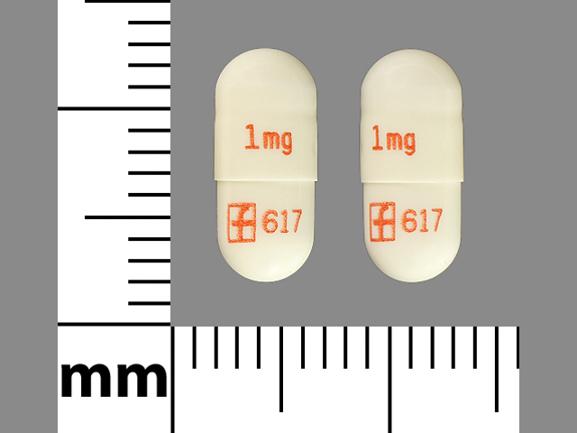Prograf Side Effects
Generic name: tacrolimus
Medically reviewed by Drugs.com. Last updated on Oct 30, 2024.
Note: This document provides detailed information about Prograf.
For healthcare professionals
Applies to tacrolimus: compounding powder, intravenous solution, oral capsule, oral capsule extended release, oral granule for reconstitution, oral tablet extended release Side Effects associated with tacrolimus. Some dosage forms listed on this page may not apply specifically to the brand name Prograf.
For healthcare professionals
Applies to tacrolimus: compounding powder, intravenous solution, oral capsule, oral capsule extended release, oral granule for reconstitution, oral tablet extended release.
General
Some of the most commonly reported side effects include hypertension, diarrhea, hyperglycemia, anemia, headache, tremor, insomnia, pain, and asthenia.[Ref]
Cardiovascular
- Very common (10% or more): Hypertension (89%), peripheral edema (36%), chest pain (19%), pericardial effusion (15%)
- Frequency not reported: Angina pectoris, bradycardia, cardiac fibrillation, cardiomyopathy, cardiopulmonary failure, deep thrombophlebitis, ECG abnormalities, echocardiogram abnormalities, heart rate decreased, hemorrhage, hypotension, myocardial hypertrophy, peripheral vascular disorder, phlebitis, tachycardia, thrombosis, vasodilation
- Postmarketing reports: Cardiac arrest, myocardial infarction, ventricular fibrillation, congestive cardiac failure, pericardial effusion, supraventricular extrasystoles, supraventricular tachycardia, bradycardia, Torsade de Pointes, QT prolongation[Ref]
Gastrointestinal
- Very common (10% or more): Diarrhea (72%), nausea (46%), constipation (36%), vomiting (29%), dyspepsia (28%)
- Frequency not reported: Abdomen enlarged, duodenitis, dysphagia, esophagitis, flatulence, gastritis, gastroesophagitis, GI hemorrhage, GI perforation, ileus, oral moniliasis, pancreatic pseudocyst, peritonitis, rectal disorder, stomatitis, ulcerative esophagitis, ulcer[Ref]
Metabolic
- Very common (10% or more): Hyperglycemia (70%), hypophosphatemia (49%), hypomagnesemia (48%), hyperkalemia (45%), anorexia (34%), hyperlipidemia (34%), hypokalemia (29%)
- Frequency not reported: Abnormal healing, acidosis, alkalosis, appetite increased, bicarbonate decreased, dehydration, gout, hypercalcemia, hypercholesterolemia, hyperphosphatemia, hyperuricemia, hypervolemia, hypocalcemia, hypoglycemia, hyponatremia, hypoproteinemia, lactic dehydrogenase increased, weight gain[Ref]
Hematologic
- Very common (10% or more): Anemia (65%), leukopenia (48%), leukocytosis (32%), thrombocytopenia (24%)
- Frequency not reported: Coagulation disorder, ecchymosis, hematocrit increased, hemoglobin abnormal, hypochromic anemia, polycythemia, prothrombin decreased, serum iron decreased
- Postmarketing reports: Agranulocytosis, disseminated intravascular coagulation, hemolytic anemia, hemolytic-uremic syndrome, neutropenia, pancytopenia, pure red cell aplasia, thrombocytopenic purpura, thrombotic thrombocytopenic purpura[Ref]
Nervous system
- Very common (10% or more): Headache (64%), tremor (56%), paresthesia (40%), dizziness (19%), fatigue (16%)
- Frequency not reported: Amnesia, aphasia, convulsion, encephalopathy, hemorrhagic stroke, hypertonia, incoordination, monoparesis, myoclonus, nerve compression, nervousness, neuralgia, neuropathy, paralysis flaccid, psychomotor skills impaired, quadriparesis, seizures, somnolence, vertigo, writing impaired
- Postmarketing reports: Coma, dysarthria, posterior reversible encephalopathy syndrome (PRES), progressive multifocal leukoencephalopathy (PML), status epilepticus, quadriplegia, flaccid paralysis, hemiparesis, aphasia, syncope, carpal tunnel syndrome, nerve compression, mutism, dysarthria[Ref]
Psychiatric
- Very common (10% or more): Insomnia (64%)
- Frequency not reported: Abnormal dreams, agitation, anxiety, confusion, crying, depression, emotional lability, hallucinations, mental status changes, mood elevated, nightmares, psychosis, thinking abnormal
- Postmarketing reports: Mutism[Ref]
Other
- Very common (10% or more): Pain (63%), asthenia (54%), fever (48%)
- Frequency not reported: Abscess, accidental injury, chills, ear pain, fall, feeling abnormal, generalized edema, hernia, otitis media, sepsis, temperature intolerance, tinnitus[Ref]
Renal
- Very common (10% or more): Serum creatinine increased (45%), BUN increased (30%)
- Frequency not reported: BK nephropathy, hydronephrosis, renal failure, toxic nephropathy, tubular necrosis[Ref]
Respiratory
- Very common (10% or more): Pleural effusion (36%), dyspnea (29%), atelectasis (28%), cough increased (18%), bronchitis (17%)
- Frequency not reported: Asthma, emphysema, hiccups, lung disorder, pharyngitis, pneumonia, pneumothorax, pulmonary edema, rhinitis, sinusitis, voice changes
- Postmarketing reports: Interstitial lung disease, pulmonary hypertension, lung infiltration, hiccups[Ref]
Hepatic
- Very common (10% or more): Liver function tests abnormal (36%)
- Frequency not reported: Cholangitis, cholestatic jaundice, GGT increased, granulomatous hepatitis, hepatitis, jaundice[Ref]
Dermatologic
- Very common (10% or more): Pruritus (36%), rash (24%)
- Frequency not reported: Alopecia, cellulitis, hirsutism, photosensitivity, sweating
- Postmarketing reports: Hyperpigmentation[Ref]
Genitourinary
- Very common (10% or more): Urinary tract infection (34%), oliguria (19%)
- Frequency not reported: Albuminuria, bladder spasm, cystitis, dysuria, hematuria, nocturia, pyuria, urge incontinence, urinary frequency, urinary incontinence, urinary retention, vaginitis, hemorrhagic cystitis, urinary retention[Ref]
Immunologic
- Very common (10% or more): Cytomegalovirus infection (12%)
- Frequency not reported: Flu syndrome, graft versus host disease (acute and chronic)[Ref]
Oncologic
- Postmarketing reports: Epstein-Barr virus associated lymphoproliferative disorder, hepatosplenic T-cell lymphoma, leukemia, lymphoma, melanoma, post-transplant lymphoproliferative disorder (PTLD)[Ref]
Musculoskeletal
- Frequency not reported: Arthralgia, generalized spasm, joint disorder, leg cramps, mobility decreased, myasthenia, myalgia, osteoporosis
- Postmarketing reports: Rhabdomyolysis, polyarthritis, pain in extremity including Calcineurin-Inhibitor Induced Pain Syndrome (CIPS)[Ref]
Hypersensitivity
- Frequency not reported: Hypersensitivity, Stevens-Johnson syndrome, toxic epidermal necrolysis, urticaria[Ref]
Ocular
- Frequency not reported: Abnormal vision, amblyopia, blindness, optic atrophy, photophobia[Ref]
References
1. (2001) "Product Information. Prograf (tacrolimus)." Fujisawa
2. Cerner Multum, Inc. "UK Summary of Product Characteristics."
3. Cerner Multum, Inc. "Australian Product Information."
More about Prograf (tacrolimus)
- Check interactions
- Compare alternatives
- Pricing & coupons
- Reviews (28)
- Drug images
- Dosage information
- During pregnancy
- Generic availability
- FDA approval history
- Drug class: calcineurin inhibitors
- Breastfeeding
- En español
Patient resources
- Prograf drug information
- Prograf (Tacrolimus Intravenous) (Advanced Reading)
- Prograf (Tacrolimus Oral) (Advanced Reading)
Other brands
Envarsus XR, Astagraf XL, Hecoria
Professional resources
Other brands
Related treatment guides
Further information
Prograf side effects can vary depending on the individual. Always consult your healthcare provider to ensure the information displayed on this page applies to your personal circumstances.
Some side effects may not be reported. You may report them to the FDA.

